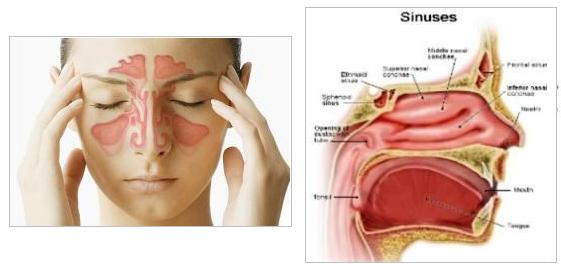Chinese Herbal Medicine and Acupuncture Can Treat Sinus Problems Effectively
Chinese Herbal Medicine and Acupuncture
Can Treat Sinus Problems Effectively
Sinus issues and infections are a problem for many people in the world. As the nose becomes congested from cold weather, allergies, a cold or influenza, infection and inflammation often occur. Acupuncture points and Chinese herbal medicine can keep the sinuses clear and infection-free.
Sinus issues may be acute or chronic, and are typically considered viral infections which last ten days. Many people suffering from chronic sinus infections go for months with headaches, teeth and jaw pain, low energy, and nasal congestion, among other symptoms.
Many patients suffer from sinus problems
Acupuncture often offers relief. Using a combination of local and distal points acupuncture can clear the sinuses and boost the immune system making it less likely for sinus infection to return.
In traditional Chinese medicine, Magnolia Flower (Xin Yi, 辛夷) can disperse wind-cold and open nasal cavities. It is traditionally used to treat sinusitis, nasal obstruction, headache, common cold, and allergies. There are some formulas containing Magnolia Flower (Xin Yi), like Magnolia Formula (Xin Yi San), Xin Yi Qing Fei Tang (Magnolia Flower & Gypsum Formula), Qing Bi Tang (Pueraria Nasal Combination), and Xanthium Formula (Cang Er San)...etc. These classic formulas are commonly used to treat rhinitis and sinusitis.
Magnolia Flower (Xin Yi)
Commonly Used TCM Formulas for Treating Sinus Problems
|
Product # |
Chinese Name |
Pin-Yin Name |
English Name |
|
0705 |
辛夷散 |
Xin Yi San |
|
|
0706 |
辛夷清肺湯 |
Xin Yi Qing Fei Tang |
|
|
1109 |
清鼻湯 |
Qing Bi Tang |
|
|
1401 |
蒼耳散 |
Cang Er San |
A recent clinical study proves that Sun Ten Magnolia Formula (Xin Yi San) can reduce nasal symptoms of patients with perennial allergic rhinitis by its diverse immunomodulatory effects. To read the summary of this paper, please click HERE. (Sun Ten Magnolia Formula (Xin Yi San) Reduces Nasal Symptoms of Patients with Perennial Allergic Rhinitis)
Sources:

